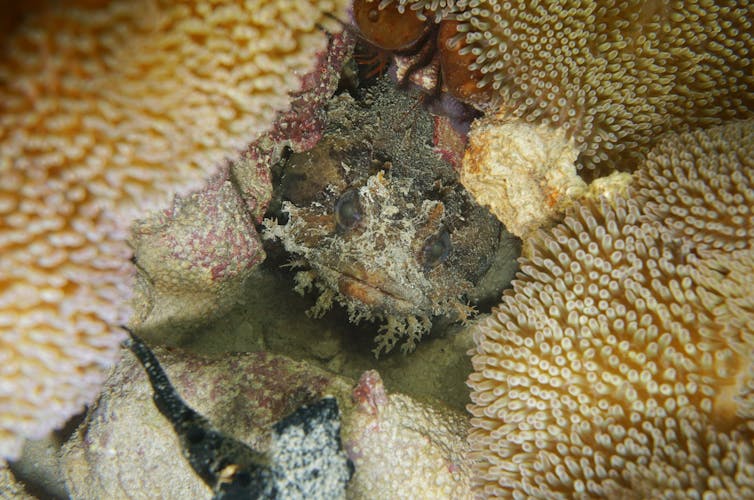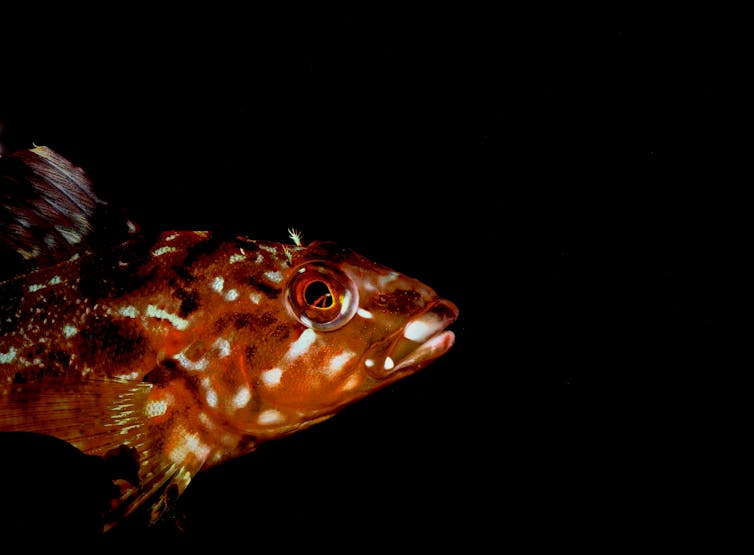Wait, fish make sounds?
Authors: Audrey Looby, PhD candidate, Fisheries and Aquatic Sciences, University of Florida; Amalis Riera, Research Scientist, Fisheries, University of Victoria; Kieran Cox, Postdoctoral fellow, Marine Ecology, University of Victoria, and Sarah Vela, Senior Data Manager, Dalhousie University

While they may lack some of the melodic qualities of birds or whales, there are almost 1,000 species of fish that use sounds to communicate, and possibly many more.
Yet, despite nearly 150 years of contemporary scientific research into fish sound production, there was no global inventory of fish species known to make sounds. Until now. Fish are one of the largest groups of sound-producing vertebrates, with speculated sound production abilities in thousands of the 34,000 fish species globally.
Our research team, led by Audrey Looby, conducted a systematic review examining almost 3,000 references. We extracted data from more than 800 different studies to determine that 989 fish species have been shown to produce active sounds globally. We used our findings to create FishSounds, an online database cataloguing fish sounds.
While fish sound production may not be as widely recognized as it is for birds, frogs, bats or whales, people have known fish could make sounds for a very long time. Fish sound production and possible fish hearing were discussed by Aristotle more than 2,000 years ago. And looking at the common names of many fishes — like grunts, croakers and drums — it is clear fishers have known about their sounds for a long time, too.
Fish also have a wide diversity of mechanisms for their sound production. Instead of vocal cords, fish may have adapted bony structures that they can rub or click together, while others use their swimbladder like a drum. Some fish even make sounds by expelling air out of their backsides. Yes, communication through “fish farting.”
Fish may use sound to communicate information about reproduction, their territory or their food. Because sound travels faster in water than in air, fish can hear signals across greater distances, and faster than they could through sight, smell or taste.
For some examples, listen to the complex calls of the Bocon toadfish, the ticks of the sablefish and a chorus of freshwater drums.
Thanks to our review, we are now able to detail which and how many fish species have been documented to use sound for communication. Actively soniferous — sound-producing — fishes have been found in marine, freshwater and brackish (slightly salty, like where rivers meet saltwater) environments in almost every region globally. They have also been found throughout the fish taxonomic tree, in 133 of the 549 fish families.
Listening to fish
Many other animals, including birds, dolphins and crabs may eavesdrop on fish sounds to eat, avoid being eaten and navigate to suitable habitats.
Underwater animals aren’t the only ones who can eavesdrop on fish sounds. We used a remote sensing technique called passive acoustics to record underwater sounds and learn more about fish and their environment.
Fish sounds have been used to detect invasive species, monitor spawning and identify essential habitats. Fish chewing sounds have even been used in aquaculture to optimize feeding.
There is also a growing body of evidence that human activities through noise pollution, habitat degradation and climate change are hurting the abilities of fish to produce and hear critical sounds for their reproduction and survival. This has potentially detrimental effects to whole populations or communities of fish.
Using our global review of soniferous fishes as a framework, FishSounds makes the data we collected available to other researchers, and anyone else, with an interest in aquatic ecosystems. Users can search by species, recording or study information. We also provide information about our data and links to other relevant websites.

We are also compiling recordings of the many sounds fish produce, with 239 recordings currently available, and many more to come.
Growing resource
We plan to expand our data offerings and functionalities, including regularly updating our database to include new research and recordings, implementing a form submission system that people can use to upload audio files of fish sounds and creating interactive searches that allow users to visualize trends in the data.
FishSounds is also collaborating with other data repositories and efforts, including FishBase, as well as contributing to a global library of underwater biological sounds.
Because more than 95 per cent of fish species lack published research on sound production, we hope to amplify what we know already and support future work on the wonderful world of fish sounds.![]()
This article is republished from The Conversation under a Creative Commons license. Original article.